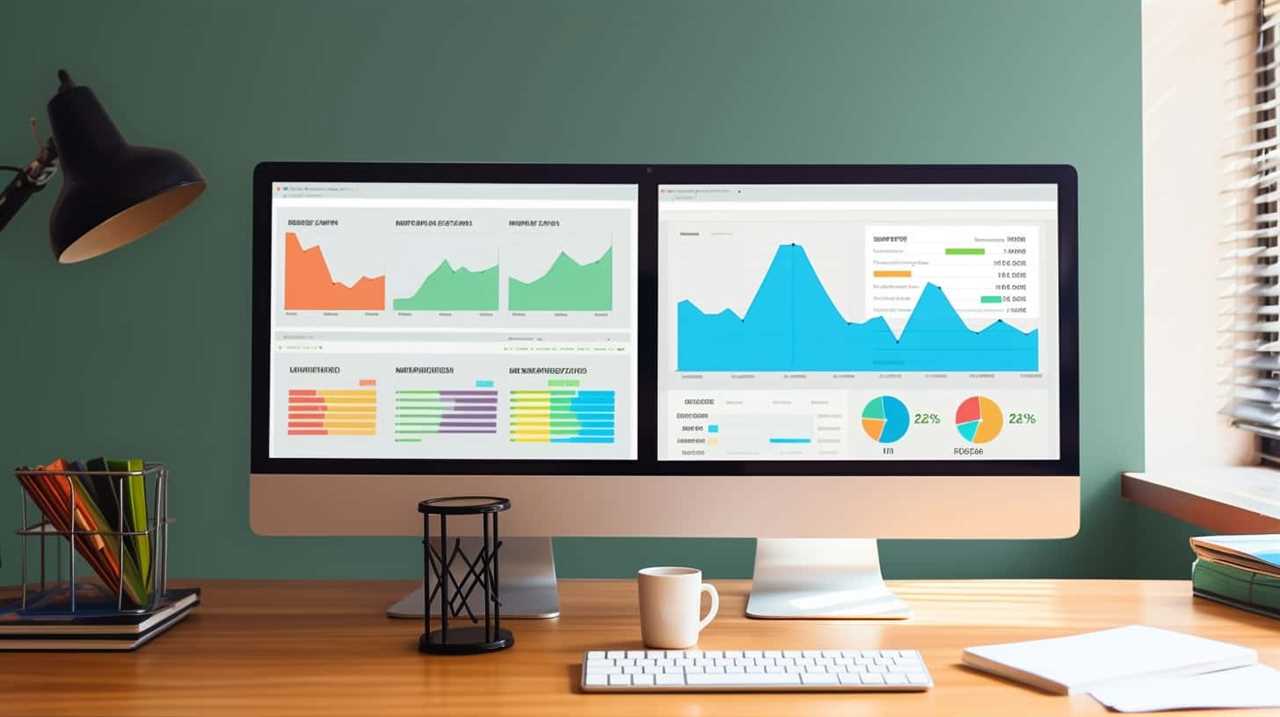Seeking to enhance your digital visibility as an skilled handyman? Search no more!
In our guide, we’ll show you how to master Google Ads for a stronger online presence. We’ll teach you:
- The importance of Google Ads
- How to set up your account
- How to create effective ad campaigns
- How to optimize your ads
- How to track your results
With our step-by-step approach, you’ll be well on your way to dominating the online world and attracting more customers.
Let’s get started!

Key Takeaways
- Google Ads establish a prominent online presence for handymen.
- Handymen can enhance customer communication through compelling ad copy.
- Using the right keywords and ad extensions increases the likelihood of conversions.
- Tracking and analyzing campaign results is crucial for measuring effectiveness.
The Importance of Google Ads for Handymen
Google Ads are essential for handymen to establish a prominent online presence. In today’s digital age, customers turn to the internet to find local services, and Google Ads provide an effective way to target and reach these potential customers. By utilizing Google Ads, handymen can enhance customer communication and effectively target their local customers.
One of the key benefits of Google Ads is the ability to enhance customer communication. With Google Ads, handymen can create compelling and informative ad copy that highlights their services, expertise, and unique selling points. By using the right keywords and ad extensions, handymen can ensure their ads appear when potential customers are actively searching for their services. This allows handymen to establish a direct line of communication with potential customers, increasing the likelihood of conversions and building trust and credibility.
Another advantage of Google Ads for handymen is the ability to target local customers. Handymen typically serve a specific geographic area, and Google Ads allows them to target their ads to specific locations. By using location targeting settings, handymen can ensure their ads are only shown to potential customers in their service area, maximizing their advertising budget and reaching the right audience. This targeted approach helps handymen connect with local customers who are more likely to convert into paying clients.
Setting Up Your Google Ads Account
To begin setting up our Google Ads account, we’ll need to gather the necessary information and follow the step-by-step instructions provided by the platform. The process may seem daunting at first, but with the right guidance, we can easily navigate through it.

Here are some best practices to keep in mind during the setup:
- Research keywords: Understanding the keywords that are relevant to our handyman business is crucial. This will help us reach the right audience and increase the chances of our ads being clicked.
- Set a realistic budget: It’s important to allocate a budget that aligns with our advertising goals. We should consider factors such as the average cost per click and our overall marketing budget.
- Understand the bidding process: Google Ads operates on a bidding system, where advertisers compete for ad placements. It’s essential to understand how bidding works and how to optimize our bids to get the most out of our budget.
Creating Effective Ad Campaigns
Once we’ve set up our Google Ads account, we can start creating effective ad campaigns to maximize our online presence. The key to a successful ad campaign is maximizing our budget and targeting the right keywords. By carefully selecting our keywords, we can ensure that our ads are shown to the right audience at the right time.
To maximize our budget, it’s important to monitor our campaign performance regularly. We can use Google Ads’ reporting tools to track our ad performance and make adjustments as needed. By analyzing our data, we can identify which keywords are driving the most traffic and conversions, and allocate our budget accordingly.
When it comes to targeting keywords, we want to choose ones that are relevant to our handyman business and have a high search volume. This will ensure that our ads are shown to users who are actively searching for the services we offer. Additionally, we can use keyword match types, such as broad match, phrase match, and exact match, to refine our targeting even further.

Creating effective ad campaigns requires constant monitoring and optimization. By maximizing our budget and targeting the right keywords, we can increase our online visibility and drive more traffic to our website.
Optimizing Your Ads for Better Performance
After carefully selecting our keywords and monitoring our campaign performance, we can now focus on optimizing our ads for better performance. Here are three key strategies to improve the effectiveness of our Google Ads:
- Refine ad targeting: By analyzing our campaign data, we can identify the demographics, locations, and interests of our target audience. This information allows us to tailor our ads to specific segments, increasing the likelihood of engagement and conversions.
- Conduct ad testing: Testing different variations of our ads can help us understand what resonates best with our audience. We can experiment with different headlines, descriptions, and visuals to determine which elements drive higher click-through rates and conversions.
- Leverage ad extensions: Ad extensions provide additional information or features alongside our ads, enhancing their visibility and appeal. We can utilize extensions like site links, callouts, and structured snippets to highlight key selling points, promotions, or contact information, making our ads more useful and compelling.
By implementing these optimization techniques, we can maximize the performance of our Google Ads and achieve better results. Remember to continuously monitor and analyze the data to make informed decisions and iterate on our strategies.
With a strong online presence, we can attract more potential customers and grow our business.

Tracking and Analyzing Your Results
Now, let’s delve into the process of tracking and analyzing our results to measure the effectiveness of our Google Ads campaign. Measuring success and interpreting data are crucial steps in understanding the impact of your ads and making informed decisions moving forward.
To effectively track and analyze your results, it is important to focus on key performance indicators (KPIs) that align with your campaign goals. Some common KPIs include click-through rate (CTR), conversion rate, cost per click (CPC), and return on ad spend (ROAS). By monitoring these metrics, you can gain valuable insights into the performance of your ads and make data-driven adjustments to optimize your campaign.
To help you visualize the tracking and analyzing process, here is a table showcasing the different metrics and their significance:
| Metric | Significance |
|---|---|
| Click-through rate (CTR) | Measures the percentage of people who clicked on your ad after seeing it. Higher CTR indicates better engagement. |
| Conversion rate | Measures the percentage of users who completed a desired action, such as making a purchase or filling out a form. Higher conversion rates indicate more effective ads. |
| Cost per click (CPC) | Measures the average cost you pay for each click on your ad. Lower CPC suggests better cost efficiency. |
| Return on ad spend (ROAS) | Measures the revenue generated for every dollar spent on ads. Higher ROAS indicates a more profitable campaign. |
Frequently Asked Questions
How Long Does It Take to See Results From Google Ads for Handymen?
It depends on several factors affecting the timeline for Google Ads results in the handyman industry. By implementing strategies to target specific demographics and locations, handymen can start seeing results sooner.

What Are the Common Mistakes Handymen Make When Setting up Their Google Ads Account?
Common mistakes handymen make when setting up their Google Ads account include improper keyword selection, neglecting ad extensions, and not optimizing landing pages. By avoiding these pitfalls and implementing effective optimization strategies, handymen can maximize the success of their Google Ads campaigns.
Are There Any Specific Strategies That Handymen Can Use to Create Effective Ad Campaigns on Google Ads?
To create effective ad campaigns on Google Ads, we focus on two key strategies: creating compelling ad copy that grabs attention, and targeting the right keywords that handymen are searching for.
How Can Handymen Optimize Their Ads for Better Performance on Google Ads?
To optimize our ads for better performance on Google Ads, we focus on optimizing ad targeting and maximizing ad scheduling efficiency. These strategies help us reach the right audience at the right time, increasing our chances of success.
What Are Some Key Metrics or Indicators That Handymen Should Track and Analyze to Measure the Success of Their Google Ads Campaigns?
To measure the success of Google Ads campaigns, we need to track key metrics and analyze data. This helps us understand how our ads are performing and make informed decisions to optimize our campaigns for better results.

Conclusion
In conclusion, by harnessing the power of Google Ads, handymen can build a strong online presence that sets them apart from the competition.
With a well-optimized ad campaign, handymen can reach their target audience effectively and track their results for continuous improvement.
By utilizing this powerful tool, handymen can elevate their businesses to new heights and ensure their success in the digital age.
So why wait? Start building your online presence today with Google Ads.











